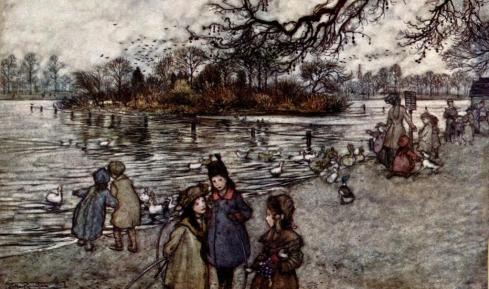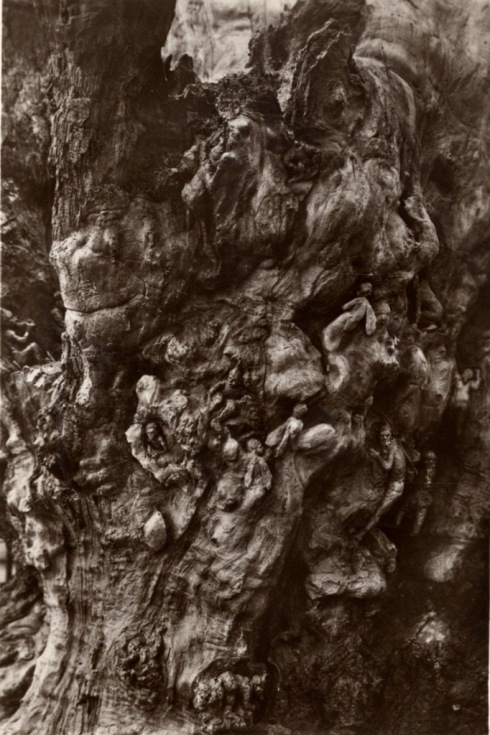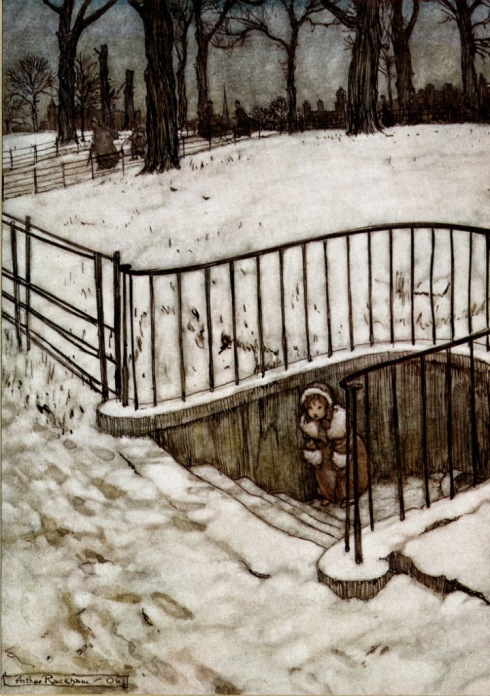We’re getting close to Christmas now so what about something a little seasonal?
I don’t much like Peter Pan. The familiar story of the irritating boy and the nice crocodile who never gets to eat him (or the equally annoying pirate) is a sickly mixture of cliches and sentiment. Before you dismiss me as a grumpy old man can I point out that I have disliked the boy who wouldn’t grow up since I first came across him, well before I grew up. Winnie the Pooh on the other hand I loved and I came to appreciate the writing of A A Milne even more as I grew older. I read those stories to my son when he was young and took him to an ideal venue for Poohsticks on Putney Common.The Wind in the Willows, Alice in Wonderland – both classics. I never came across E Nesbitt or George MacDonald as a child but I read some of their work later.We didn’t have Paddington Bear when I was young but we did have another bear, Mary Plain (by Gwynedd Rae). And I didn’t read any of Tove Jansson’s Moomin books until I worked in a library. So I’m no enemy of the classics of children’s literature. But I can’t stand Peter Pan, in any of his incarnations,
Peter Pan of course has Kensington connections.
But the Peter Pan in this picture is not the one featured in the 1905 book Peter Pan in Kensington Gardens. In that book Peter Pan is a weird baby who ends up living in the hidden world of fairies, birds and other supernatural creatures located in Kensington Gardens unobserved by the daytime visitors and workers.
We have copies of the 1905 and 1912 editions which are probably of most interest for the illustrations by Arthur Racknam, 49 colour plates in the 1905 edition with additional black and white pictures in the 1912 edition.
If you concentrate on the pictures which don’t feature the proto-Pan you find a set of faery images which are beautiful and sometimes grotesque.
This view of the Serpentine at dusk has the traditional winged fairies you can imagine sharing the same eco-system as insects and birds. These fairies come from the same place as Cicely Mary Barker’s Flower Fairies, out of the deep Victorian imagination, via the Pre-Raphaelites and the darker works of individuals like Richard Dadd.
Rackham also depicts the ordinary world of daytime. He still prefers a gloomy scene though, with grey skies, and mysterious islands.
The three girls in front are keeping their backs to the island so no one will know they are discussing Barrie’s unlikely notions about babies hatching from eggs and turning into birds (or is it vice versa?).
One of the better themes in the book is the idea of a hidden world beneath the park which children are half aware of already.
During the day things are happening out of sight. But at night….
A feast, featuring some non-winged faries adopting a variety of costumes, not worried about mixing with mice creatures. Some images dip into the grotesque.
Here Rackham is not far from Sidney Sime or Harry Clarke who both illustrated the works of Edgar Allen Poe.
I was particularly intrigued by this picture.
The bad fairies emerge from beneath the trees like crawling insects. Rackham depicts them as an infestation, like ants or termites. Something rotten.
Back in the daylight world the Elfin Oak looks merely decorative, hardly creepy at all.
Images like the one below may represent the glamour cast by fairies to fool us into thinking them beautiful…..
As beautiful as any mortal woman in the daylight world.
For the children the search goes on. Below a girl called Maimie hides from the adults, so she can stay in the gardens after dark.
The spot she’s chosen, St Govor’s Well is a real place
With some real Edwardian children playing in it.
At the end of the book Barrie tells about the gravestones erected by the proto-Pan and his acolytes to mark the passing of lost children. Rackham undercuts the notion by placing the illustration in a pastoral scene set years before, the 1840s by the look of the costumes.
For me all the imagination in the book is in Rackam’s illustrations and it is they who turn a real place – Kensington Gardens – into an outpost of Faery.
Postscript
Was I a bit hard on the infant Pan? Maybe. But Rackham’s pictures are so much better than the text, They have a weird intensity. Rackham was one of those artists who was rediscovered in the 60s and 70s in glossy paperback editions along with many other illustrators of the Victorian and Edwardian period.
This week saw the soft launch (as they say) of our World War one website: http://www.kcworldwar1.org.uk It’s full of contemporary images and text from the Local Studies collection with the additional opportunity for readers of adding their own text and/or pictures. Like a blog, it will grow over months, maybe even years to form a permanent record of Kensington and Chelsea in the Great War. Take a look, I’m sure there will be something there to surprise you.
Your Christmas surprise on this blog is that next week instead of just one long post on Thursday I’m writing short daily posts starting on Monday. I come across lots of pictures when doing research for the blog which are interesting but won’t fit the 10 or more pictures and a thousand words format I’ve adopted. So next week there will be mini-posts from Monday to Friday. Read them daily or save them up. See you Monday.

















December 18th, 2014 at 1:12 am
These are fascinating drawings, gorgeous! Thank you for posting them. And nice commentary, as usual. Happy Christmas. 🙂
February 2nd, 2015 at 4:34 pm
I’ve a similar experience of Peter Pan, which I hated (especially the Disney version) when I was young. But then I discovered Rackham’s art as a teenager, which changed everything. My reference library had a copy of the 1906 edition (it’s not 1905), which set me on the path to be an illustrator. As soon as I could afford it I picked up my own copy of the 1912 edition of Peter Pan in Kensington Gardens, and even now many years later it remains the most important book in my Rackham collection. I once took it to Kensington Gardens and followed the “tour of the gardens”, identifying all the locations of the illustrations. But it’s the art, not the text, that resounded. Barrie’s whimsical story jumps from lyrical fantasy to saccharine pathos, it’s a strange read today to say the least.
December 1st, 2018 at 8:52 am
When I first got my Kindle, about the time this post was written, I found that Peter Pan in Kensington Gardens was a free download, so I got it, but have never got around to reading it. The trouble is I always hated Arthur Rackham’s illustrations as a child. I was given a book called the Arthur Rackham Fairy Book. Great stories about Sinbad and so on, but I found the pictures very creepy and frightening, especially all his trees with faces etc that seemed to be people. Until reading your piece today I have avoided looking at his illustrations, and now I can see that he was incredibly talented, but I still hate them! Funnily enough Rackham himself looks quite harmless in his portrait (see Wikipedia), I think he looks just like the identical twin of Grant Wood’s dentist who he used as the model for the man with the pitchfork in “American Gothic.”